You’ve never thought about your pricing strategies as an opportunity to add a premium look to your brand, right?
What a hidden gem!
Your company probably keeps increasing its marketing budget month-by-month.
But what if I tell you that you may still have unutilized resources that would advance your marketing efforts?
Defining the right pricing strategy is essential to get the most out of your advertising dollars.
And carefully implemented premium pricing tactics can suddenly turn your brand to the more valuable one in the eyes of your target audience.
I’ve analyzed various pricing strategies and models from the common industry standards (philosophical part) to the best practices (the part you actually need) below.
Shall we get started? You choose.

Industry-standard pricing strategies
What we’re aiming here is merely finding out the golden line of pricing between the company and its potential customers.
Ordinary people would approach it as simple math: Calculate your costs and add a mark-up.
Yeah, regular people would do it. But we’re not, are we? I mean, we’re not regular, we’re marketers or entrepreneurs.
After all, we’re crazy enough to try to achieve an elite and luxurious look through our “Pricing” page.

Humour aside, defining the pricing strategies is a serious business and one of the most critical parts of your marketing activities.
So, here are the five most popular strategies:
- Cost-plus pricing – add a mark-up to the cost of goods and services.
- Value-based pricing – think of your product’s value in the eyes of the customers. And there you go. It’s your price.
- Competitive pricing – take your competitors’ prices as a benchmark.
- Penetration pricing – start with lower prices to stand out in a competitive market, and then increase them once you strengthen the brand’s position.
- Skim pricing – launch the product with the highest price possible and lower it gradually.
Industry-standard pricing strategies are proven methods on how to price a product. And you can easily find lots of information about them.
Therefore, I’ll focus on the best practices and pricing model options you can apply right now to get substantial positive results.

Price bundling
Do you remember the last time you were shopping around in your favourite e-commerce store? Before you proceeded to checkout, it probably suggested adding another related item into your cart and getting a discount.
If not, that store needs a competent digital marketing specialist. Because what we’re talking about here is price bundling.
Price bundling is offering a discounted price for the combination of a few related products or services.
The below image is an excellent example of an e-commerce combo. It offers up to $150 discount for the lens if you buy it together with the camera.
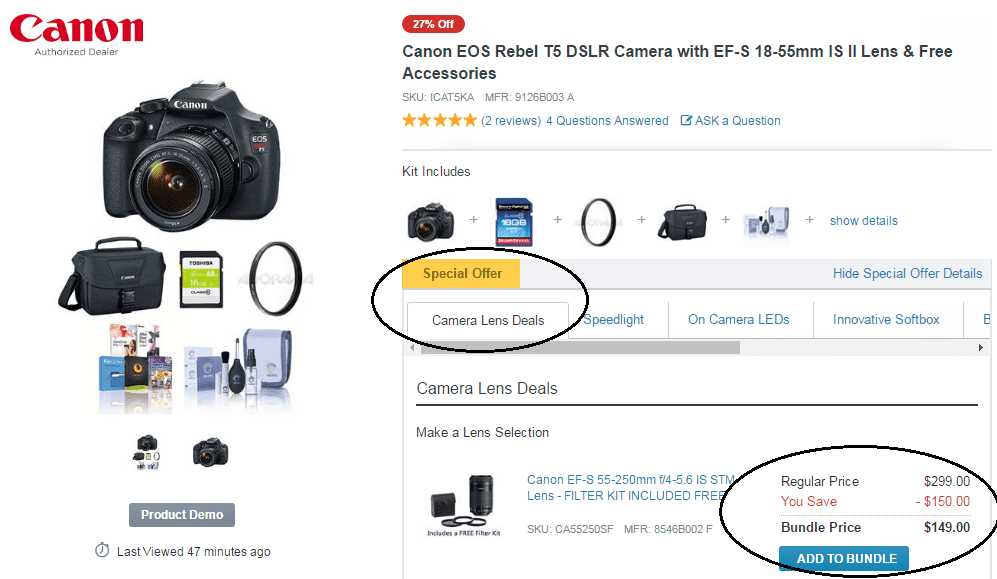
Multiple vs Flat-Rate pricing strategies
Basically, you can choose one of the two pricing models: Multiple prices packages or a single price (flat-rate pricing).
Providing only one price option for all your offers simplifies the purchasing process for customers.
On the other hand, it’s white and black. You only have one offer and they’ll either take it or not. No room for other colours (options).
For example, potential customers may not need some of your offer’s features. But they wouldn’t have a chance to get fewer features at lower prices.
In contrast, multiple price packages let you target your audience’s lower, middle, and upper classes. Or if you’re in the B2B business, they’d help you offer tailored solutions to startups, SMBs, and enterprises.
And it means you can keep your low-paying customers happy while positioning your brand as a luxurious one for more prominent clients by utilizing different prices.
So if your business is suitable for offering multiple price packages, it’s the way to go. Let’s take a look at a few types of these pricing model options below.
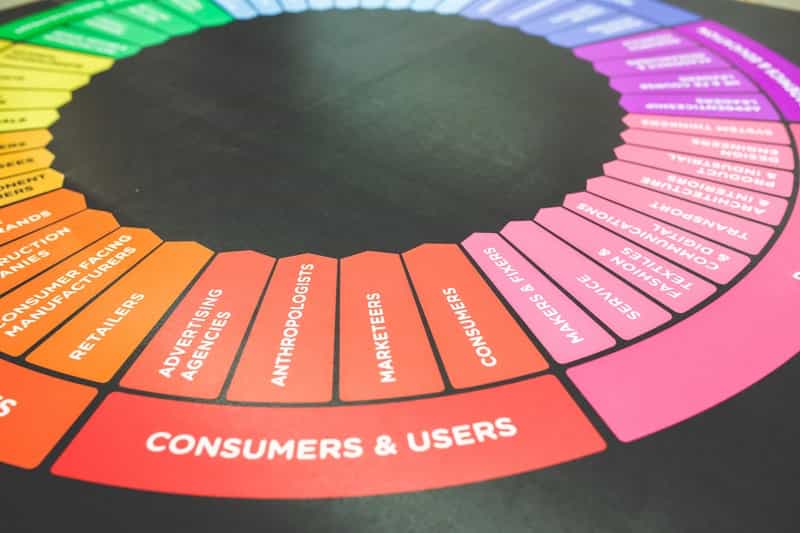
Pay As You Go pricing model
Businesses usually use it for services. It’s a dynamic pricing model that changes depending on the usage of a service.
For example, Stripe fees are calculated with usage-based pricing. You only pay more when you earn more.

Per User or Per Seat pricing
Because of its easily understandable nature, it’s one of the most go-to pricing models for B2B businesses. The main idea here is charging based on the number of people using the service.
As this model is popular among SaaS businesses, Zendesk can be a perfect example. Zendesk Support charges monthly fixed cost per agent/user.
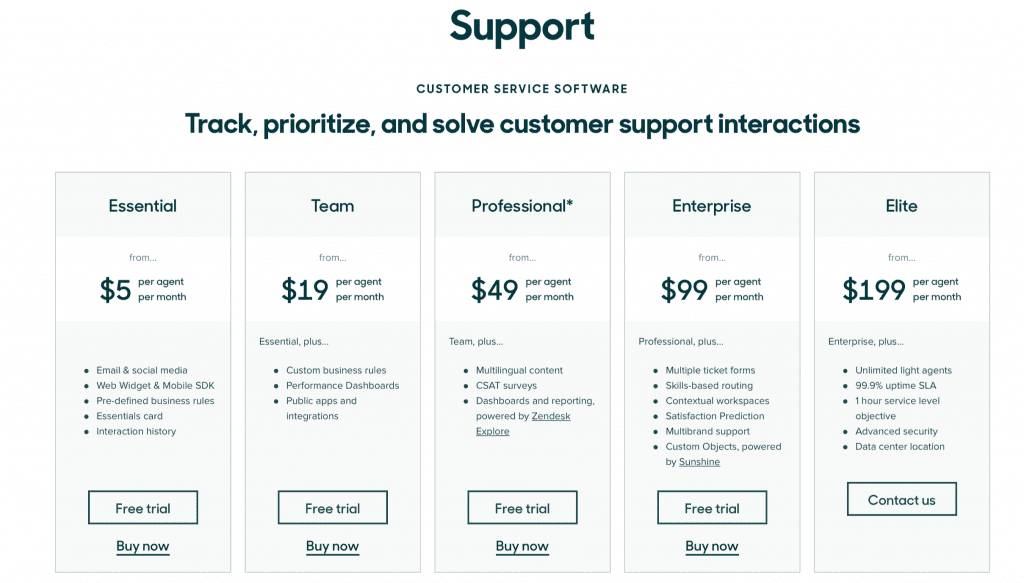
Per Engaged User pricing
Many businesses which use Per Seat pricing model offer massive discounts when the customer pays annually rather than monthly.
But customers don’t know how many seats they’ll need after a few months. Then how can they pay annually upfront?
Per Engaged User pricing is the solution. It charges only for active users. Even if the customers paid for more seats than the active ones, they’d get a refund. For example, eSchedule and Slack pricing strategies are based on this model.
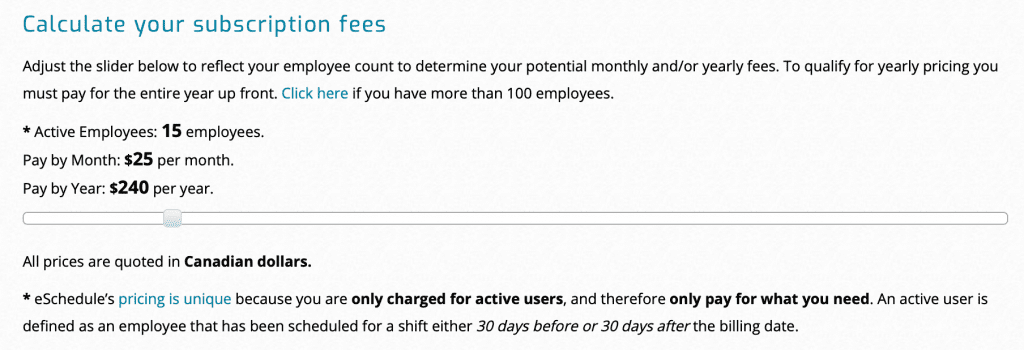
Feature-based pricing strategies
You may offer lots of solutions and functionalities. And some of those will probably cost way higher than others to produce or maintain.
It’d obviously raise your overall prices. But what if some of your potential customers don’t need all those additional features?
Requiring them to pay higher because of the functionalities that they don’t use would result in losing them. Feature-based pricing model helps you to prevent it.
Evernote’s premium pricing page is an excellent example. They provide the basic features with the “Free” package and add more advanced solutions for the paid plans.
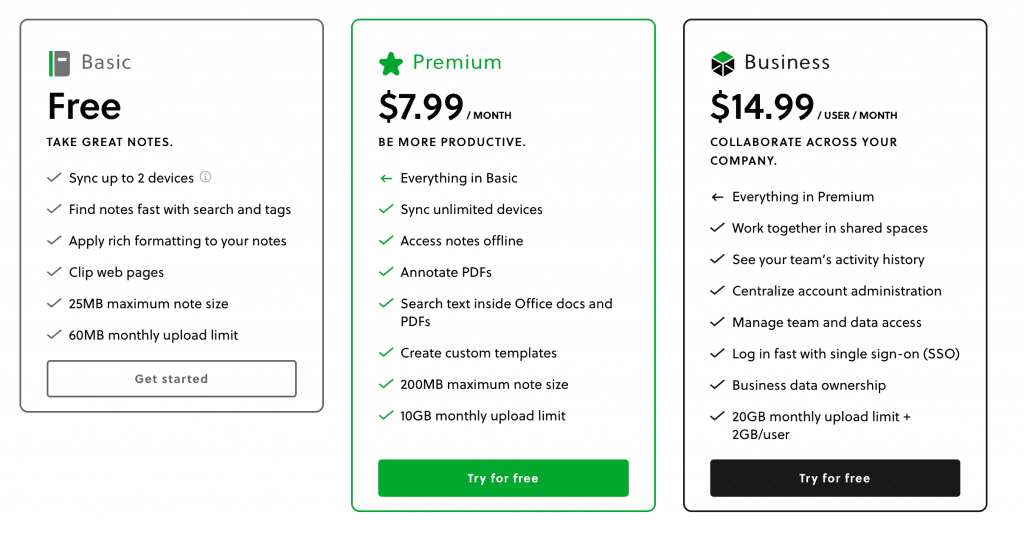
Freemium pricing
Nowadays if you’re a fan of using lots of tools to handle daily activities, their monthly costs will agonize you sooner or later.
People actively look for free options of their lovely tools to cut down costs. So offering customers a free version would keep them loyal even when they’re not in the purchasing mood.
Freemium also helps you stand out if you’re using a competitive pricing strategy.
Loyal customers mean increased chance of conversions in the future. And yeah, we forgot ads!
It’s a free version. So you can feel free to show them ads. Hell, lots of them.. Ahem.. Maybe the last one is not the best idea.
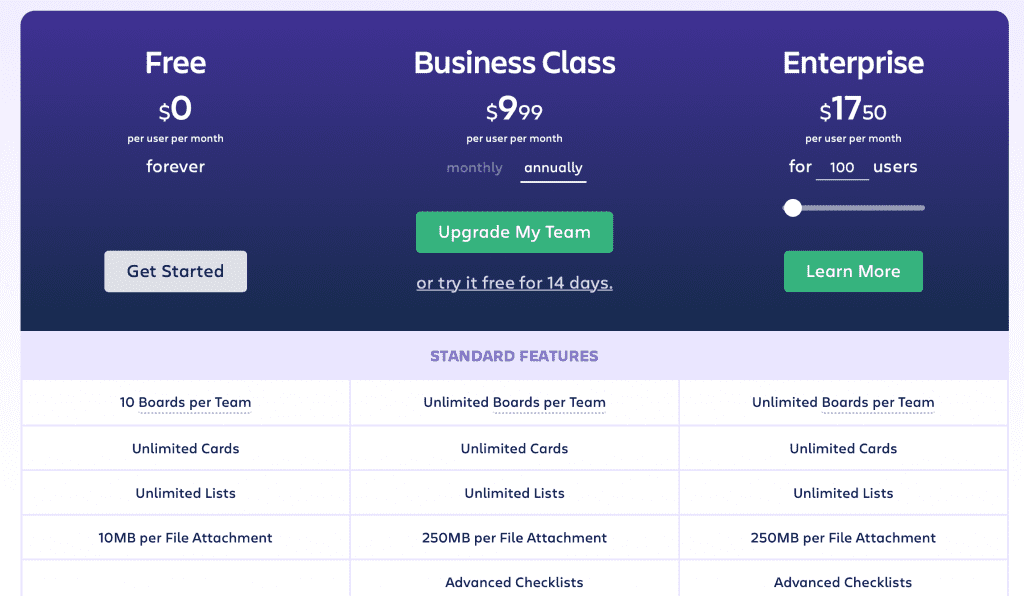
Choose one or more models
Pricing tactics and models are almost endless. Thus, I’ve only covered popular tactics and best practices above.
Besides, psychological nuances are also critical when it comes to how to price a product or service. But it can be another article’s topic. So we won’t dive into it for now.
In short, these are the multiple pricing models to keep in mind:
You can implement one or more of these into your pricing page. As many brands, especially SaaS companies, combine a few of them, it seems like the best shot.
I believe everyone has something to say about this topic. Share your lovely pricing strategies, tactics, and experiences of their implementation with us in the comments.
Kamran Shukurlu
Kamran is a T-shaped eCommerce Digital Marketer and Content Strategist with 9+ years of experience in 30+ industries. A few of the companies that benefited from his services: Leo Burnett, Translated, Airbnb, Samsung, Huawei, etc.
Related Posts
February 4, 2021
Web Content Development 101 For Small Businesses
January 28, 2021
Monthly Social Media Updates and News: December 2020
January 13, 2021
How To Add A Link To Instagram Story Without 10K Followers
December 14, 2020
6 Testimonial Examples And How To Ask For Them
December 11, 2020
IG Line Break Generator: No Need For it Anymore? (2022)
December 2, 2020





